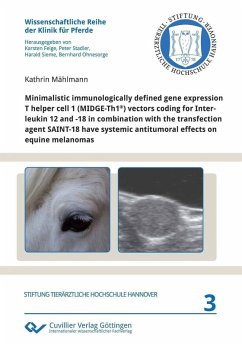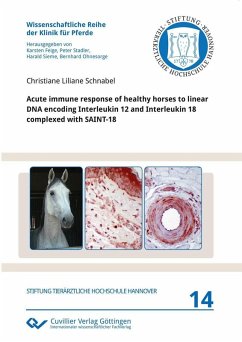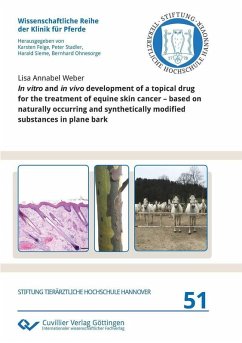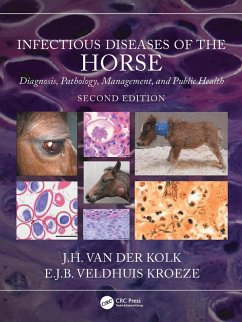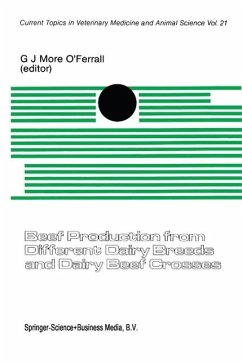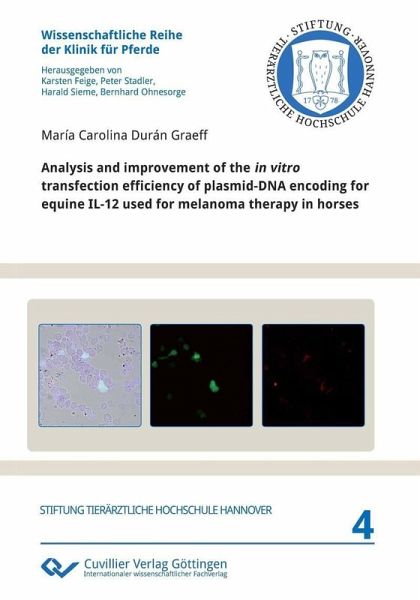
Analysis and improvement of the in vitro transfection efficiency of plasmid-DNA encoding for equine IL-12 used for melanoma therapy in horses (eBook, PDF)
Sofort per Download lieferbar
Statt: 25,51 €**
18,80 €
inkl. MwSt. und vom Verlag festgesetzt.
**Preis der gedruckten Ausgabe (Broschiertes Buch)
Alle Infos zum eBook verschenkenWeitere Ausgaben:

PAYBACK Punkte
0 °P sammeln!
**Preis der gedruckten Ausgabe (Broschiertes Buch)
In horses studies targeting equine melanoma therapy using DNA encoding for cytokines as interleukin 12 (IL-12) have shown some promising results. Nevertheless, complete remission after treatment has been only observed in few cases, possibly due to reduced therapy efficiency. Herein transfection efficiency and methodology-induced cytotoxicity were analysed after transfection with different nanoparticle-mediated and conventional approaches using eukaryotic DNA-expression-plasmids and mammalian cell lines. The addition of gold nanoparticles (AuNPs) to the transfection protocols significantly incr...
In horses studies targeting equine melanoma therapy using DNA encoding for cytokines as interleukin 12 (IL-12) have shown some promising results. Nevertheless, complete remission after treatment has been only observed in few cases, possibly due to reduced therapy efficiency. Herein transfection efficiency and methodology-induced cytotoxicity were analysed after transfection with different nanoparticle-mediated and conventional approaches using eukaryotic DNA-expression-plasmids and mammalian cell lines. The addition of gold nanoparticles (AuNPs) to the transfection protocols significantly increased transfection efficiency when compared to a conventional FHD mediated transfection protocol, and cell vitality was mainly negatively affected by the addition of chemically generated AuNPs. To measure accurately equine IL-12 and IFN-gamma concentrations after therapy, several antibodies for cross reactivity against this equine cytokines were evaluated, establishing afterwards a bead-based Luminex assay. Additionally, considering the valuable characteristics of dendritic cells (DCs), their use in further equine melanoma studies could be beneficial. To improve the still poor generation efficiency in horses, a human CD14 monoclonal antibody and an automated magnetic activated cell sorting system was used, reaching 2-fold higher DC yields than in previous published outcomes.
Dieser Download kann aus rechtlichen Gründen nur mit Rechnungsadresse in A, B, BG, CY, CZ, D, DK, EW, E, FIN, F, GR, HR, H, IRL, I, LT, L, LR, M, NL, PL, P, R, S, SLO, SK ausgeliefert werden.




